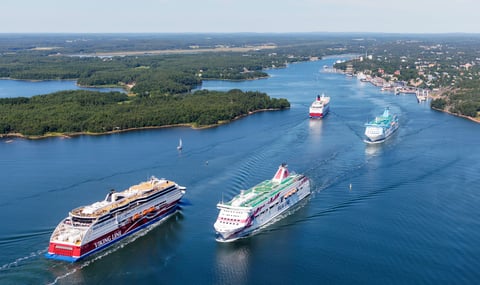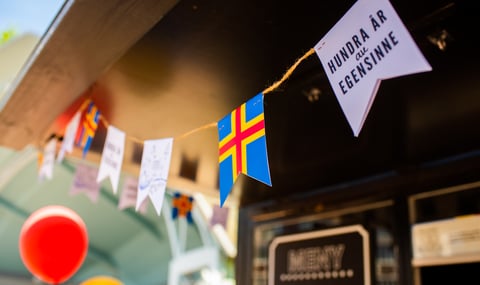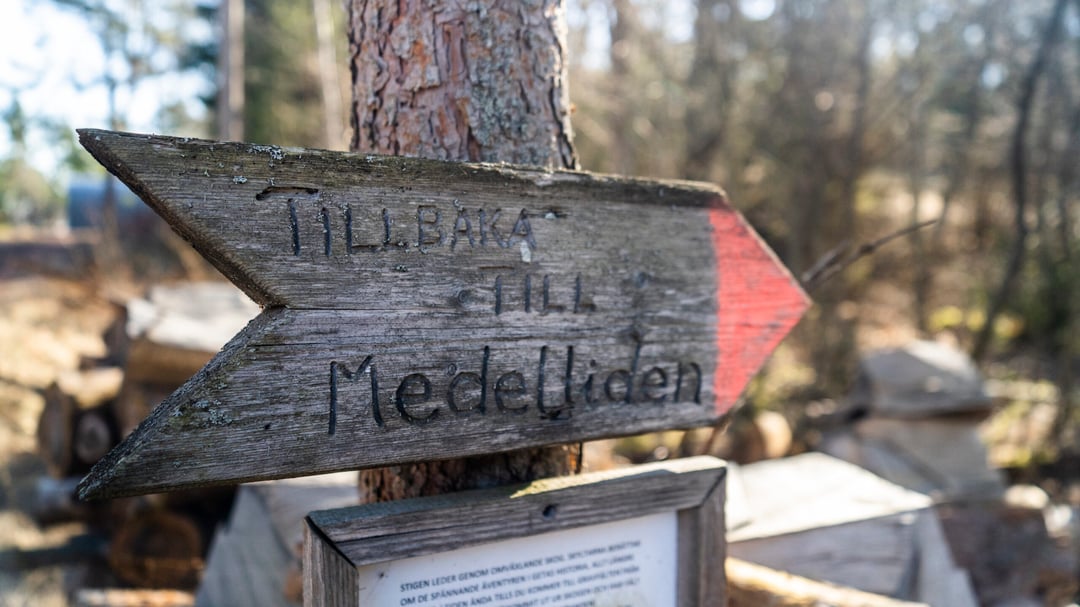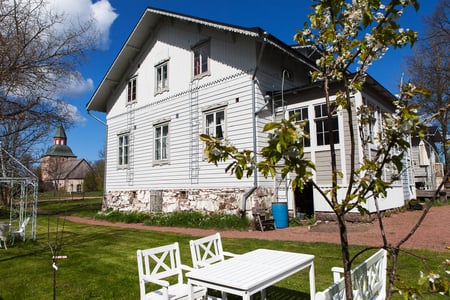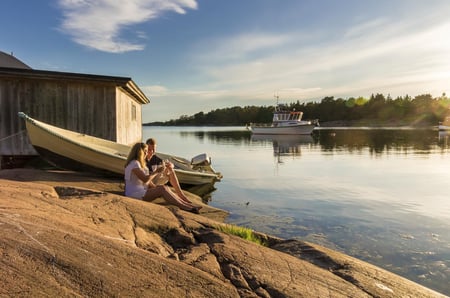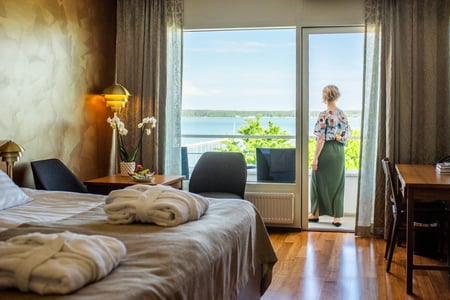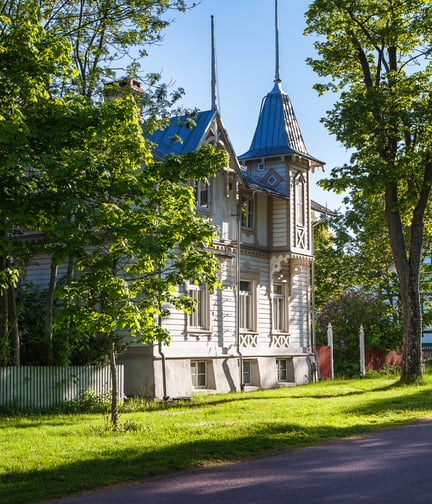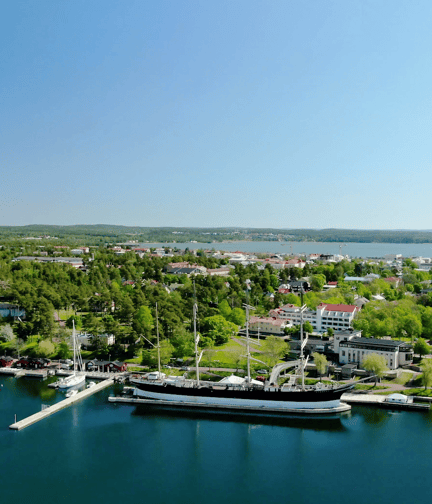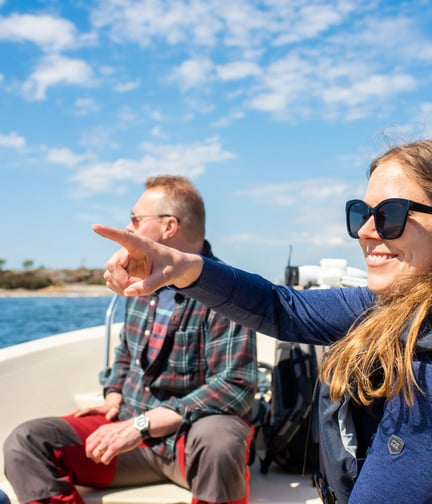From the middle ages to the autonomy
Medieval castle and churches.
Denmark was the leading Nordic country between 1000 A.D. and 1100 A.D. The Swedes got the political power over Åland in the beginning of the 1200’s after the Danish domain had weakened.
It’s estimated that the population of Åland in the 1000’s was around 2000 to 3000 inhabitants. Most people were mainly farmers, fishermen and hunters.
Not very much is preserved from the medieval times in Åland. The main historic buildings are the castle of Kastelholm and some stone churches located both on the main island and in the archipelago.
The castle was built in a strategic place – on an island near a fairway that also passed the nearby church of Sund and all the way to the ancient fort in Borgboda that probably was used as a place of refuge up until early medieval times.
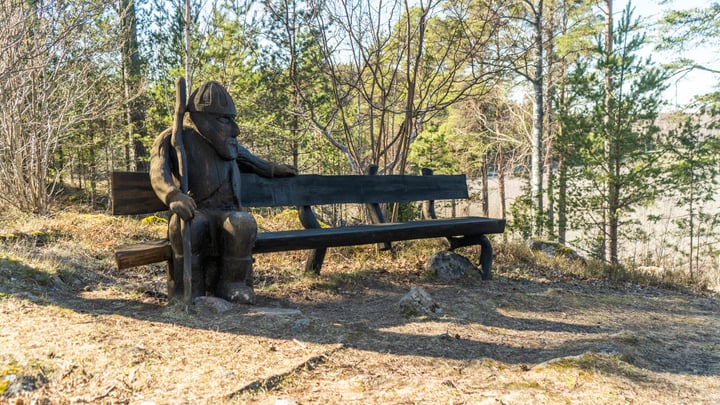
King Gustav Vasa
It’s unclear how old the oldest part of the Kastelholm Castle is. It’s certain that the castle was mentioned for the first time in 1388 in an estate inventory after Bo Johnsson Grip. Bailiffs and state holders that the Swedish king appointed, reigned over Kastelholm and made sure that taxes were collected for the Swedish crown. Among the medieval lords of the castle were Erik Johansson, father of Gustav Vasa. Gustav Vasa himself spent time in the castle and both his son, duke Johan and his widow, Katarina Stenbock, had inherited Åland.
In 1634 Åland was no longer a castle province and was subordinated to the county governor in Turku. Thereafter the importance of the castle diminished and it was left to ruin.
The medieval churches were built on the initiative of the inhabitants and twelve medieval stone churches are preserved. Archaeologists are presently analysing mortar to be able to exactly determine the age of the churches, and research so far proves that the church of Sund is the oldest and built somewhere in between 1250 and 1275. Part of other churches can be older but research about them is not yet finished.
Åland was emptied
The Great Northern War war between Sweden and Russia began in 1700 and in 1714 the Russians occupied Åland. Almost all of Åland was emptied of its inhabitants who fled to Sweden, and didn’t return until after the peace treaty of Uusikaupunki in 1721. Åland was also partly depopulated in 1741-1743 because of the Russian troops that once again invaded Åland.
Åland becomes autonomous against the will of its inhabitants
The years 1917-1921 are dramatic in Åland’s history and bring Åland forward to its status today – an autonomous province within the borders of Finland. After the Russian revolution of 1917 some political groups in Åland felt the winds of change and started discussing a reunion with the old motherland Sweden.
Meetings were held – in the beginning in secrecy – and petitions collected among the people. A majority were for a reunion with Sweden and a petition that expressed the wish of the Åland people was presented to the King of Sweden Gustav V.
Illegal county council
Finland became independent from Russia in 1917 and the government restructured Åland in 1918 as a province. The Åland people responded with electing an illegal council that also internationally acted for Åland’s reunion with Sweden. The Swedish government agreed to the demands while Finland rejected them. But the Finnish government was prepared to allow Åland a form of inner independence and in 1920 the Finnish government accepted a self governing law for Åland. The law became effective on the 6th of May but the Åland people refused to acknowledge it. The Finnish Prime Minister then arrived to Åland to deal with the unruly islanders that didn’t want any self-government.
The leaders of Åland, Julius Sundblom and Carl Björkman were accused of high treason and sentenced to penitentiary, but were pardoned by the Finnish president.
Submitted to the league of nations
The arrest of the two Åland leaders only worsened the conflict and the case was referred to the League of Nations. In June 1921 the league made its decision: Finland was to have sovereignty over Åland and the self governing law from 1920 should be broadened with additional guarantees. The Swedish language would be protected and the Åland land would remain in the hands of the natives. In Åland the disappointment was great over the decision.
In 1922 the first elections of the new Åland Parliament were held and its first plenary assembly was on June 9th of the same year. That day is now celebrated as Åland’s Independence Day.
Nowadays the legislative body of Åland, the Åland Parliament, is called “lagting” and there are 30 members. The Åland Parliament has the right to legislate its own laws within several areas such as education, culture, healthcare, industry, internal traffic, police, post, radio and telephone. Åland follows the Finnish laws when it comes to foreign affairs and legal questions.
Åland got its own flag in 1953,
